#macropic
Photo
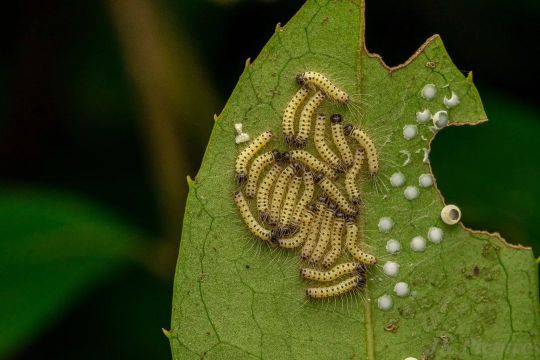
Caterpillar Camera details: Nikon D7500 with Tamron 90mm f/2.8 Di macro 1:1 VC USD and Radiant diffuser #caterpillar #larvalstage #larva #insect #caterpillarphotography #photography #nikond7500 #tamron #tamron90mm #tamron90mmmacro #macro #macrophotography #macropic #macroclicks (at Western Ghats) https://www.instagram.com/p/Cn8pEMANXu4/?igshid=NGJjMDIxMWI=
#caterpillar#larvalstage#larva#insect#caterpillarphotography#photography#nikond7500#tamron#tamron90mm#tamron90mmmacro#macro#macrophotography#macropic#macroclicks
0 notes
Text

Owlet Moth (Erebus macrops)
222 notes
·
View notes
Note
Thoughts on desert rain frogs?
No thoughts, only meep
youtube
544 notes
·
View notes
Photo
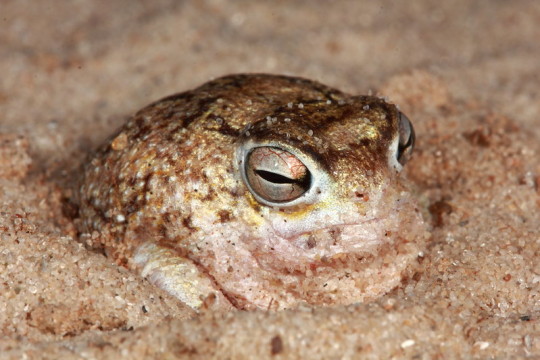
A desert rain frog (Breviceps macrops) in South Africa, Africa
by David Maguire
#desert rain frog#frogs#amphibians#breviceps macrops#breviceps#Brevicipitidae#anura#amphibia#chordata#wildlife: south africa#wildlife: africa
772 notes
·
View notes
Text

Amphibiuary Day 3: Round
Everybody's favourite irate squeaky toy, the desert rain frog, Breviceps macrops.
#Amphibiuary#Amphibiuary 2024#my art#Synth's dumb doodles#desert rain frog#Breviceps macrops#digital art#autodesk sketchbook
131 notes
·
View notes
Text

Male Euophrys frontalis busting some moves for the ladies
241 notes
·
View notes
Text
The Most Rarest, Ancient Ants and The Quest to Rediscover Them
Australia is home to a wide range of ant species. One that might spring to mind is the Bulldog/Jack jumper ant, genus myrmecia.
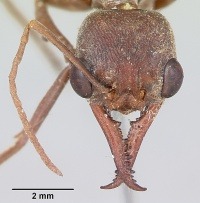
(M. gulosa, "Hoppy Joe!")
As you can see, these ants have quite big eyes. This is because bulldog ants are very dependant on vision, something most other ant species have replaced with pheromonal (scent) trails.
But we aren't here to talk about them. We're here to discuss their cooler, shady cousin,
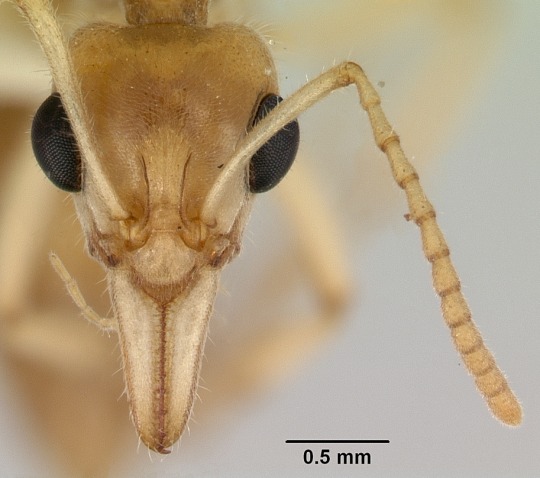
the Dinosaur ant (Nothomyrmecia macrops).
They might look all cute, but they are much more than that.
These ants are possibly the rarest and most primitive of all ant species, and this shows in their behaviour.
Like the Bulldog ant, these ants rely only on their vision as apposed to pheromones. Colonies only range from 50-100 individuals, when most ant species have colonies in the thousands. Furthermore, queens only lay one generation of eggs every year!
Because of this small size, workers can not effectively compete with other species such as Camponotus and Iridomyrmex. Thus, these ants are exclusively nocturnal so they don't have to hunt alongside the diurnal ant species.
Infact, the Dinosaur and Bulldog ant are so similar that the Dinosaur ants genus name, 'Nothomyrmecia', means 'False Bulldog ant'. The species name, 'macrops', means 'big eyes'.
--------------------------------------------------
This species was first discovered in the form of two worker specimens by Amy Ena Crocker and colleagues, supposedly inland from Israelite Bay in Western Australia.
Due to its primitive appearance and unique body shapes, scientists were eager to find more specimens. Many expeditions were set out to locate this ant over the next three decades, all of which failed. One of the more notable expeditions was lead by the late, the great entomologist E. O. Wilson (who literally invented sociobiology!!!)
However, on October 22, 1977, entomologist Robert W. Taylor and colleagues would rediscover a lone worker in Poochera, South Australia. I'll let nullarbor.net take it away:
"Spurred on by rumours that an American scientist was coming to search for the lost ant, Dr. Taylor apparently mounted one last ditch attempt to beat the Americans to the punch. By an incredible stroke of good luck - if it could be called that - Dr Taylor and his group were driving to Western Australia when their vehicle struck mechanical problems at Poochera. As we all know, even the best laid plans can go astray, and Dr. Taylor's expedition was forced to make an unscheduled stop, and camp for the night at Poochera.
"Later that evening Dr. Taylor conducted an impromptu insect survey in the mallee scrub adjacent to camp. There's no doubt the last thing on Dr. Taylor's mind was Nothomyrmecia - after all, the last and only recorded sighting was made 46 years earlier, and even that was fully 1300 kilometres away to the west. Poochera was definitely the last place where Dr. Taylor expected to find Nothomyrmecia - but there it was, one solitary Nothomyrmecia worker ant crawling on a eucalyptus tree trunk.
"The sight was truly astonishing. Dr. Taylor then rushed back to his colleagues and in true Australian style he announced to the world, "The bloody bastard's here! I've got the Notho-bloody- myrmecia!"
I'd like to imagine that's true.
Poochera, which features Nothomyrmecia abundantly in the streets, is perhaps the only town I know of that survives exclusively off of ant tourism.
See you soon.
#ants#myrmecology#bugblr#entomology#antkeeping#insects#bugs#ant love#antblr#ant#nothomyrmecia#nothomyrmecia macrops
25 notes
·
View notes
Text

New Wave Neon Bubbles II
#photooftheday#macrop hotography#tilted lens#high contrast#macro#photography#colors#colours#neon photography#experimental photography#oil and water#bubbles#cells
5 notes
·
View notes
Note
Hi!! As one of your 13,800 followers could you assign me an ant species to cherish please?? I mean obvs I cherish them all but I’d love an official special ant if you don’t mind. ☺️ (also soz if you’ve gotten a lot of messages like this haha)
Your ant is Nothomyrmecia macrops- the dinosaur ant! This critically endangered species of ant was once thought extinct prior to its rediscovery in 1977. Nothomyrmecia ants are so beloved by entomologists worldwide that the site where they were rediscovered (Poochera, Australia) is considered the only town in the world with ant-based tourism. The town has even painted dinosaur ants all over the sidewalk and put up a large statue in their honor. This species is fascinating for their unique morphology, ecology, and behavior; definitely worth a deep dive to read all about them!
78 notes
·
View notes
Photo

Mucidula mucida by fungiphotoholic https://flic.kr/p/2nRxh9g
28 notes
·
View notes
Text
Breviceps Acutirostris - The strawberry rain frog
Discovered in 1963

#frog#rain frog#breviceps macrops#breviceps carruthersi#breviceps adspersus#breviceps Acutirostris#frogs#frog facts#gay frogs#breviceps
21 notes
·
View notes
Photo

Hoser, Raymond. 2023 A new Viper species from Croatia (Reptilia: Squamata:
Serpentes: Viperidae: Pelias). Australasian Journal of Herpetology 61: 5-18.
Australasian Journal of Herpetology 61:5-18.
Published 10 January 2023.
LSIDURN:LSID:ZOOBANK.ORG:PUB:4107B463-6781-4175-BAC8-2DC4B5560DB8 RAYMOND T. HOSER LSIDurn:lsid:zoobank.org:author:F9D74EB5-CFB5-49A0-8C7C-9F993B8504AE 488 Park Road, Park Orchards, Victoria, 3134, Australia. Phone: +61 3 9812 3322 Fax: 9812 3355 E-mail: snakeman (at) snakeman.com.au
Received 11 April 2022, Accepted 12 August 2022, Published 10 January 2023.
ABSTRACT This paper formally names a new species of viper from Croatia, Europe as Pelias cathrynmatteoae sp. nov.. This range-restricted taxon has been known as distinct for some years. It is most closely related to Pelias ursinii Bonaparte, 1835, a species placed by most publishing authors in the genus Vipera Laurenti, 1769, or alternatively the nominate taxon best known as Vipera ursinii rakosiensis Mehely, 1893, herein treated as a full species, that being the next most closely related species. The putative taxa Vipera ursinii macrops Mehely, 1911 and Vipera ursinii moldavica Nilson, Andren and Joger, 1993 are treated herein as subspecies of Vipera rakosiensis based on their limited divergence from that taxon, but all are also included herein in the genus Pelias Merrem 1820. P. cathrynmatteoae sp. nov. as formally named herein has also at times been confused with putative P. ursinii macrops Mehely, 1911. P. cathrynmatteoae sp. nov. (type locality Velebit, Croatia) is split into two subspecies with P. cathrynmatteoae kapelaensis subsp. nov. occurring in the Kapela Range (part of the northern Dinaric Alps). A subspecies of P. ursinii from far south-eastern France, east of the Durance River is also formally named for the fi rst time as P. ursinii alpesdehautensis subsp. nov.. It is a distinctly different subspecies to the previously named P. ursinii wettsteini Knoepffl er and Sochurek, 1955, with a type locality of den Montagne de Lure, Bases Alpes, south-east France and occurring west of the Durance River. The southern population of P. graeca (Nilson and Andren, 1988) is formally named as the subspecies P. graeca vardousiaensis subsp. nov.. With limited distributions, combined with a strong interest in vipers among herpetologists, it would make sense for viable captive populations of the relevant taxa to be established to protect against unforseen calamity or event that may exterminate those in the wild.
Keywords: Snake; viper, taxonomy; nomenclature; new species; vipers; Croatia; Europe; Pelias; Vipera; Acridophaga; ursinii; wettsteini; rakosiensis; macrops; moldavica; graeca; new species; cathrynmatteoae; new subspecies; kapelaensis; alpesdehautensis; vardusiaensis.
#new species#viper#Croatia#cathrynmatteoae#ursinii#graeca#macrops#new subspecies#kapelaensis#alpesdehautensis#vardusiaensis
0 notes
Note
I read somewhere that rain frogs are mostly muscle, is this true? Extremely curious about their anatomy so I'm wondering if you have any insight as to why/how they are so round!
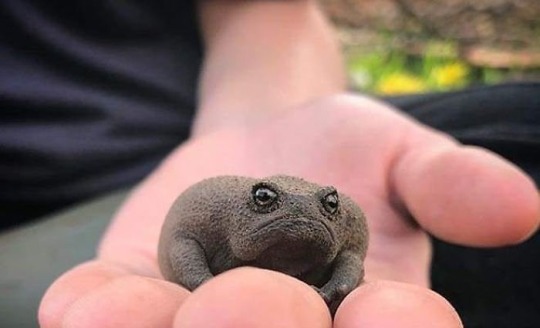
Black Rain Frog (Breviceps fuscus), family Brevicipitidae, endemic to South Africa
photograph by Brittany Raine | Nature ~ Adventure ~ Photography | (@brittle_sees)
~~~~~~~~~~~~~~~~~~~~~~~~~~~~~~~~~~~~~~~~~~~~~~~
Yes, you are correct, Rain Frogs are actually not altogether that fat... they're just shaped like that. They actually do have quite a lot of muscle mass for their size.
Having a round, compact body seems to allow for better, more efficient, burrowing.
You see, that "fat", round body again and again in different groups of burrowing frogs, like many of the Microhylidae and the Spadefoots. This group of frogs does seem to be the ultimate in roundness though!
For a more technical explanation of how they're structured, check out Mark Scherz's recent post about the subject...
The Travelling Taxonomist - Why are rain frogs so round? What's /inside/ of... (tumblr.com)
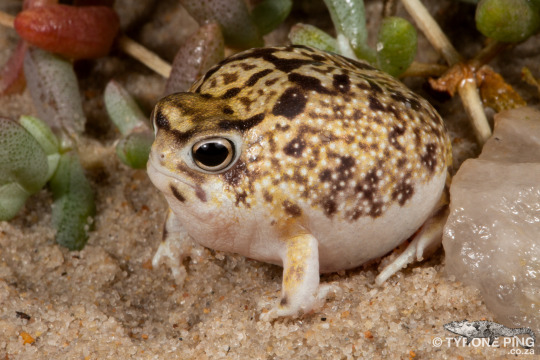
Desert Rain Frog (Breviceps macrops), family Brevicipitidae, South Africa
A few herpetologists are now including rain frogs (and their close relatives) in the family Hemisotidae, as the subfamily Brevicipitinae. I am not, though the 2 families are now considered to be very closely related.
photograph by Tyrone Ping
Tyrone Ping - Exploring Southern African Herpetofauna
962 notes
·
View notes
Photo

The Flying Nudibranch El nudi volador... Fotografía que ya publique con mi otra cuenta pero voy pasando todo lo de buceo a esta. El domingo fui a bucear con los amigos de @barracudaoropesa Como siempre compañía inmejorable y profesionalidad. El mar no acompañó mucho, pero pude sacar un par de buenas capturas. En este caso una captura atípica de un clásico de la zona Felimare Tricolor. 📸 #Diving360vr #oppofindx5pro #oppo #nudis #macropics #divemag #uwmacro #underwater #underwaterfotography #shootonoppo #marinebiology #summeroppo #felimaretricolor #macro #macrophotography #ilovenudi #oropesadelmar #sealovers #uwphotography #weefinedive #dive #divephotography #uwphoto #underwaterpic #nudibranchlover #lovenudi #nudibranch #nudibranquio #nudilover #barracudaoropesa (en Oropesa del Mar) https://www.instagram.com/p/ChSvKsfqj6R/?igshid=NGJjMDIxMWI=
#diving360vr#oppofindx5pro#oppo#nudis#macropics#divemag#uwmacro#underwater#underwaterfotography#shootonoppo#marinebiology#summeroppo#felimaretricolor#macro#macrophotography#ilovenudi#oropesadelmar#sealovers#uwphotography#weefinedive#dive#divephotography#uwphoto#underwaterpic#nudibranchlover#lovenudi#nudibranch#nudibranquio#nudilover#barracudaoropesa
1 note
·
View note
Note
Which frog is Most Round?
No question, members of the genus Breviceps. They are basically balls of pure muscle. Which species is more challenging. Contenders include

Breviceps mossambicus

B. gibbosus

B. fuscus
and

B. verrucosus
All extremely round.
Note 1: I do not include some of the other Breviceps here, like B. macrops, because they have more distinct heads and larger eyes that break up the roundness.
Note 2: I am defining roundness here as being as near to spherical as possible, not just a circle. If we were going just circular/disclike, there would be many other possible contenders, and Glyphoglossus molossus would be a very possible winner.
All images from iNaturalist, CC-BY-NC [1,2,3,4]
3K notes
·
View notes
Text
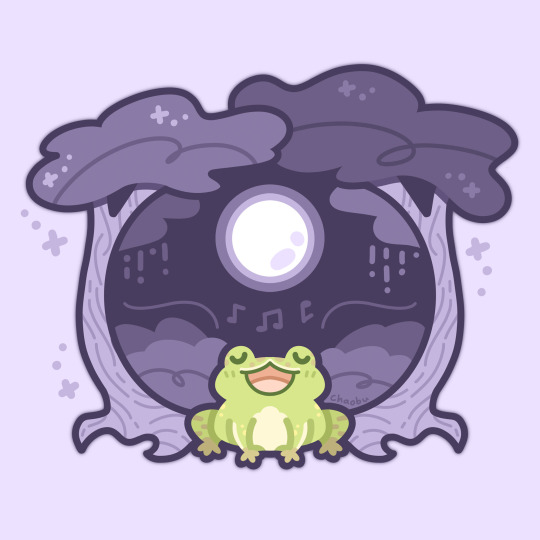







Froggy fall! (part 2/3)
9. Spooky forest / Barking tree frog (Dryophytes gratiosus)
10. Hanging ivy / Red-backed poison frog (Ranitomeya reticulata)
11. Candle / Golden mantella (Mantella aurantiaca)
12. Stones + gems / Coronated tree frog (Triprion spinosus)
13. Tea / Amazon milk frog (Trachycephalus resinifictrix)
14. Night sky / Desert rain frog (Breviceps macrops)
15. Harvest / Madagascar tomato frog (Dyscophus antongilii)
16. Plant shelf / American bullfrog (Lithobates catesbeianus)
728 notes
·
View notes